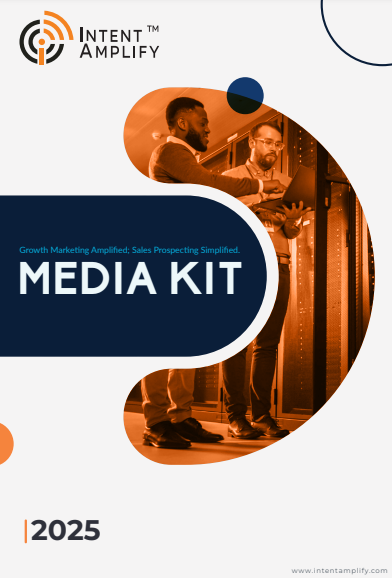
How to Align Sales and Marketing with ABM: A 2025 Blueprint
- Last updated on: June 17, 2025
Within the fast-changing B2B sales and marketing environment, Account-Based Marketing, aka ABM, has matured from a prospective tactic to a strategic imperative. As we look to the start of 2025, demands to generate measurable, high-impact growth have never been more significant. And with tremendous investments made in data, automation, and content, misalignment between sales and marketing organizations still represents one of the biggest threats to ABM’s full potential.
Firms today are not in trouble because they lack technology; they are in trouble because siloed thinking persists. Misalignment creates budgets flushed down the drain, disjointed customer experiences, and dismal ROI. For ABM to fuel sustainable growth, both groups must row together, driven by shared goals, unified data, and a common purpose to engage and convert the accounts that matter most.
This roadmap is an in-depth, step-by-step guide to aligning sales and marketing in 2025 according to today’s industry research, tested models, and insights gained in businesses where ABM has transformed pipeline health and deal velocity.
The Hidden Cost of Sales and Marketing Misalignment
In spite of all the decades of debate on “smarketing,” the disparity exists and costs money. According to Forrester’s 2024 B2B Benchmark Report, companies with tightly aligned sales and marketing teams grow revenue 19% more and are 15% more profitable than their poorly aligned brethren. But another research carried out by Demandbase found that 47% of B2B marketers still struggle to gain sales buy-in when launching ABM campaigns.
What does this misalignment look like in real life? Marketing spends money on content syndication, email campaigns, and event sponsorships to drive thousands of leads, but sales reps promptly dismiss these as low quality or not aligned with current pipeline objectives. The outcome is predictable: leads die, budget bleeds, and each camp points the finger at the other for failing to hit targets.
The price isn’t just monetary. Customers sense it, as well. With disjointed messaging and context-less follow-up, trust vanishes. In a universe where B2B buyers anticipate a connected, hyper-relevant experience, that’s an expensive risk.
ABM: The Natural Bridge Between Sales and Marketing
So why is ABM the answer to this age-old disconnect? The fundamental of ABM is simple but powerful: address key accounts not as individual leads but as high-value markets in and of themselves. Rather than firing generic campaigns at a mass audience, ABM focuses collective sales and marketing resources on a finite set of target accounts, delivering highly focused messaging and customized outreach at each stage of the buyer journey.
In practice, this means:
- Shared Target Accounts: Sales and marketing align on which companies are most valuable. No longer chasing leads that will never be followed up on by sales.
- Unified Data: Sales and marketing share the same intent signals, firmographics, and engagement metrics to decide when and how to engage.
- Joint KPIs: Only account engagement, opportunity creation, and revenue contribution are tracked, not vanity metrics such as email opens or pure lead quantity.
This alignment is intentional. With ABM, sales no longer see marketing as a siloed content factory, and marketing has visibility into campaign influence on true pipeline progression.
Building the Foundation: How to Get There
It requires cultural commitment, well-defined processes, and ceaseless iteration to align sales and marketing. This is not a switch to flip overnight. Here’s a playbook to get it done in 2025
1. Establish a Definitive Ideal Customer Profile (ICP)
It all starts with a thoroughly researched ICP. This is not a one-page roster of firm sizes and sectors; it’s a living, data-driven profile that captures actual buying signals, pain points, and decision-maker personas.
Modern-day ABM leaders use intent data, firmographics, and technographics to increase the value of the ICP continuously. This combined understanding enables both teams to concentrate on accounts with the best opportunity to convert and offer lifetime value.
2. Define Joint Revenue Targets
Misalignment typically comes from different metrics of success. Marketing can be measured by generating the most leads, and sales can be measured by closing more significant deals faster. To align behaviors, KPIs must focus on revenue-related metrics that both teams influence, like target account engagement, movement through opportunities, winning rates, and deal sizes.
Checking all these together at set intervals guarantees accountability and mutual trust between the two teams.
3. Create One Data System
Siloed data is the biggest enemy of ABM. Make your CRM, marketing automation, intent data providers, and ABM orchestration tools one cohesive system. This way, each touch point — ad click through, sales call– contributes to a complete picture of the account.
Advanced ABM platforms like Demandbase, 6sense, and Terminus offer robust integrations to merge data streams and offer actionable insights in real time.
4. Develop an SLA for Lead Handoff and Feedback
Create clear service-level agreements (SLAs) that set out when marketing passes an account to sales, how quickly sales must reply, and what constitutes a sales-accepted account (SAA). This reduces confusion and stops good accounts disappearing into the “black hole.”
Equally important is the feedback loop. Sales need to give feedback on why deals fall through or persist; this drives enhanced segmentation and messaging for subsequent campaigns.
5. Conduct Regular Alignment Meetings
There is no replacement for the human touch in technology. Regular or biweekly alignment meetings keep both teams current, allow for quick pivots on the basis of rising signals, and instill a culture of collective accountability.
Use these meetings to review account engagement dashboards, realign priorities, and discover any friction points before they become pipeline blockages.
Equipping Teams with the Right ABM Tech Stack
In 2025, successful ABM is well nigh impossible without the right technology underpinning. A good tech stack not only automates outreach but also choreographs personalized engagement at scale and arms both teams with real-time intelligence.
Key components are:
- Intent Data Providers: Solutions like Bombora and G2 give signals of what your target accounts are looking for currently.
- ABM Platforms: Demandbase, 6sense, and Terminus orchestrate campaigns, personalize site content, and rank accounts dynamically.
- Sales Enablement Solutions: Solutions like Outreach and Salesloft deliver the correct content, cadences, and context for each interaction.
Companies that invest in bringing these tools together have more predictable campaign execution and shorter sales cycles.
A Real-World Example: ABM Alignment in Practice
Consider a mid-tier SaaS firm seeking to migrate upmarket into the enterprise market. In the past, the marketing team has focused on quantity lead generation, nurturing thousands of SMB leads, and letting the sales team pursue a handful of large enterprises with little support.
By taking the ABM route, the company discovered 150 high-potential business accounts within its optimized ICP. Marketing shifted its efforts from bulk email campaigns to content specifically designed around each account’s industry and buying stage. Sales reps collaborated with marketing closely to craft customized outreach sequences and were engaged in content strategy.
The alignment paid off in tangible results within nine months:
40% increase in opportunity-to-close rate for target accounts.
22% year-over-year average deal size increase.
Extreme reduction in the length of the sales cycle due to more enlightened buyers and more substantial engagement. This sample illustrates how one ABM approach converts alignment into real pipeline impact.
Avoiding Common Pitfalls
Even well-aligned ABM strategies can fall apart if common pitfalls are overlooked:
Misaligned Metrics: As long as marketing is still being measured in volume rather than quality, old habits persist. Link incentives to account-level performance.
Overcomplicating the Tech Stack: New tech has great potential, but gets muddled if rolled out half-baked. Invest in platforms that complement and fit your team’s strengths.
Sales enablement: Made-to-measure content is useless if sales reps are ignorant of its existence or use it ineffectively. Train teams, make them readily available, and comment on content suitability.
Not iterating: ABM isn’t an essay. Top-performing teams constantly experiment with new strategies, messaging adjustments, and account lists based on real performance learnings.
Your ABM Alignment Blueprint for 2025
Aligning sales and marketing through ABM is not only a tactic; it’s a cultural shift that calls for definition, commitment, and constant tweaking. As buyer behaviors get more unpredictable and competitive pressure builds, organizations that master this alignment will protect and expand their market share.
Here’s a final checklist to get going or drive your ABM alignment today:
- Develop an up-to-date ICP on the basis of fresh, actionable data.
- Adopt revenue-sharing metrics and call out both sides.
- Shatter data silos and embrace one integrated tech stack.
- Standardize handoff processes and feedback loops.
- Deliver a regular cadence of collaboration and joint strategy meetings.
Companies that adopt these principles into daily business will find that ABM not only aligns and contributes to sales and marketing, it unifies them into a unified growth machine, ready to meet whatever 2025 has in store.
What Might Readers Still Be Wondering?
Even with a solid plan, leaders may ask themselves: “How do I get buy-in from key stakeholders to invest in ABM and alignment?” or “How do I pick the best tech stack without overdoing it?”
For these answers and a personalized roadmap tailored to your particular goals, look to leverage the expertise of those who share proven know-how and an AI-based methodology for attaining ABM success.
Ready to revolutionize your revenue machine? Let’s get aligned for growth. Stop by Intent Amplify® to see how an intent-centric ABM approach can take your results to the next level in 2025 and beyond. To participate in our interviews, please write to us at sudipto@intentamplify.com
FAQs
1. What sets Account-Based Marketing apart from traditional lead generation?
ABM turns the funnel on its head: rather than casting a broad net, it concentrates efforts on high-value accounts, tailoring outreach, and aligning sales and marketing to engage and convert these specific targets.
2. How long does it take to see ROI from ABM?
Timeframes are industry and sales-cycle complexity-dependent. Generally, most companies start to realize quantifiable pipeline gains within six to nine months, as ROI compounds with improved processes.
3. Do small businesses benefit from ABM?
Yes. While ABM is most commonly associated with enterprise selling, small- and mid-sized businesses are able to use ABM principles to concentrate resources, close larger deals, and build deeper customer relationships.
4. How does intent data improve ABM alignment?
Intent signals tell us which accounts are learning relevant content, therefore signaling purchase readiness. Both groups can then organize outreach and tailor content to every stage of the journey.
5. What is the largest ABM error businesses are making?
Treating ABM as yet another marketing campaign, without sales buy-in or committed KPIs. Without real co-operation, even with excellent tech and excellent content, nothing will reach expected levels.




